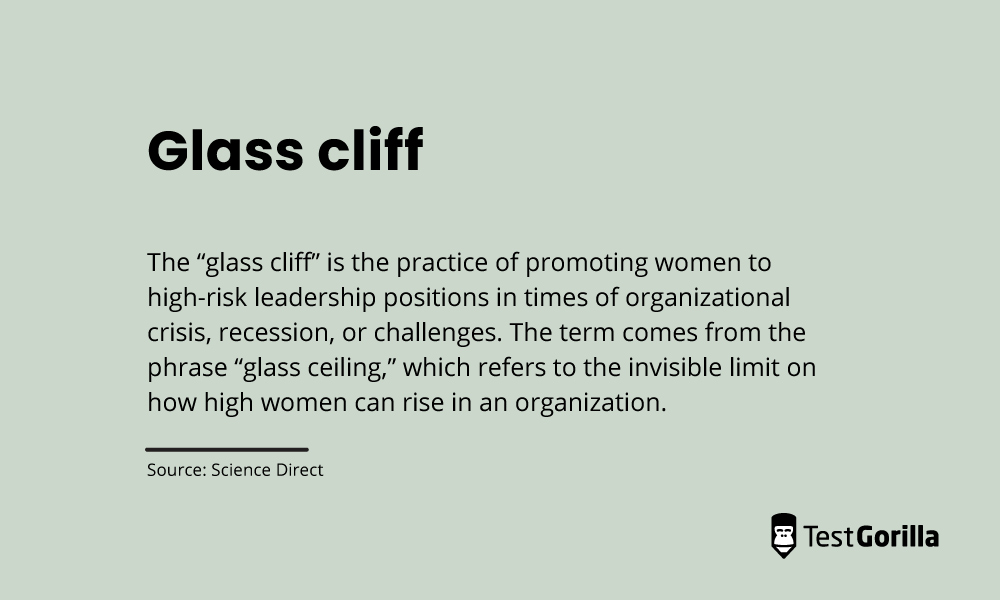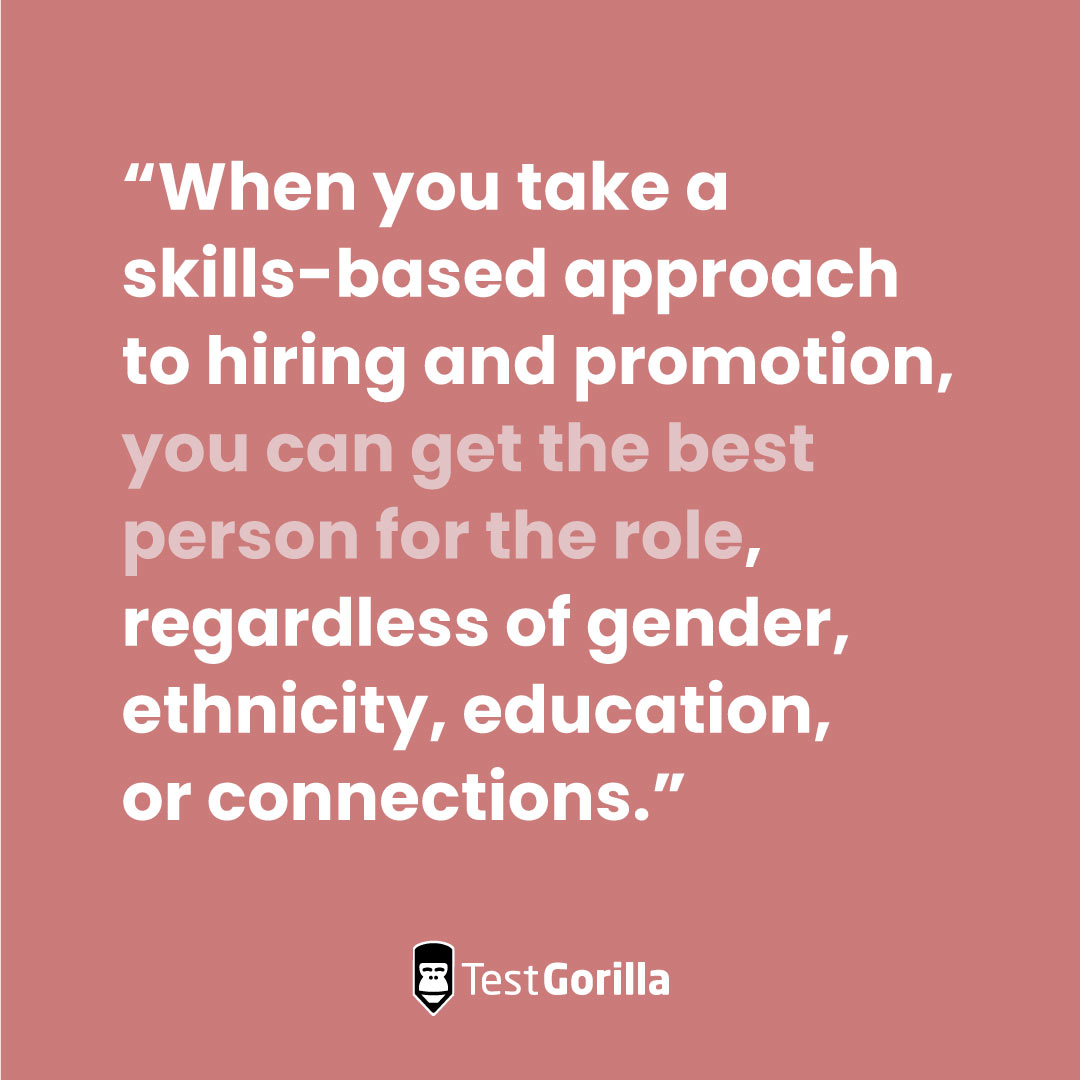Crystal clear? How to prevent your women leaders from falling off the glass cliff
In 2012, Yahoo appointed Marissa Mayer as its new chief executive, a move which, at the time, seemed like a step forward for women in leadership.
This was, of course, before it became clear that Yahoo was doomed to lose the battle against Google.
The upshot? Mayer was left teetering at the edge of a “glass cliff” with an impossible job to do and no parachute.
The "glass cliff" refers to the phenomenon of appointing women like Mayer to leadership positions during times of crisis or difficulty, when the risk of failure is higher. When they do fail, it reinforces negative stereotypes about women leaders and hampers efforts to achieve equality in leadership generally.
Despite having made great strides in terms of diversity, women in fields from finance and politics to technology and academia continue to grapple with this threat.
In this article, we’ll look at the reasons why the glass cliff continues to be standard practice for some organizations. We’ll also dig into the impact on individuals, companies, society, economies, and diversity in general.
Additionally, we’ll explore why organizations may unintentionally set women leaders up to fail and how you can avoid doing this and instead build your women leaders up for long-term success.
What is the glass cliff?
The “glass cliff” is the practice of promoting women to high-risk leadership positions in times of organizational crisis, recession, or challenges. The term comes from the phrase “glass ceiling,” which refers to the invisible limit on how high women can rise in an organization.
It’s one reason why women leaders experience shorter tenures than their men peers, which also makes the task of turning things around in a company that much harder.[1]
Below, we'll take a look at why the glass cliff exists, its impact, and some examples of the glass cliff in the workplace.
Why do some organizations intentionally set women leaders up to fail?
Some organizations may push their women leaders over a glass cliff because they see women as more expendable. This means they can serve as a convenient scapegoat when they fail. When that happens, the woman can be replaced by a more demographically typical leader (i.e. a man) who swoops in to save the day – and the company.
In a landmark study, researchers showed how poorly performing Fortune 500 companies were more likely to appoint a woman CEO than those performing well.
Some organizations also set women leaders up to fail because they don’t take the right steps to be truly inclusive and diverse. For example, by failing to address sexual harassment, hostile work environments, and ingrained biases. We’ll take a look at this in more detail below.
What’s the impact of the glass cliff?
The glass cliff not only impacts the careers of individual women, it reinforces negative stereotypes and perceptions about women leaders as not being capable or “strong.” This can hamper efforts to achieve gender parity in leadership generally.
This is particularly concerning since, according to McKinsey, women are continuously underrepresented in leadership positions, with only 38% of manager-level roles held by women. Additionally, more women in leadership leave their companies: For every woman at the director level who gets promoted, two women directors choose to leave.[2]
Given that building more diverse teams has huge benefits for problem-solving, creativity, and innovation – and can transform your business – this is something all companies should be concerned about.
The glass cliff can also have far-reaching effects on individual well-being and confidence. Women placed in glass cliff scenarios may feel that they weren't chosen for their qualifications but because of their gender, which can lead to feelings of tokenism and lack of belonging. This can lead to increased employee turnover, which can make your company seem less attractive to women or feminine-presenting candidates.[2]
Companies that appear to engage in “woke washing” or quota filling without providing adequate support or resources can also face reputational damage. This can impact their relationships with employees and their public image and standing within their industry.
The glass cliff in corporate environments case study: Ellen Pao and Reddit
Ellen Pao was appointed as the interim CEO of Reddit in November 2014, during a period of significant turmoil and controversy within the company. She stepped into the role after the controversial firing of popular Reddit employee Victoria Taylor and amid growing concerns about issues such as harassment, hate speech, and content moderation on the platform.
Pao's leadership was marked by her efforts to address some of these concerns, including implementing changes to address the aforementioned issues of harassment and hate speech. However, her decisions were met with backlash from some sections of the Reddit community, leading to a highly polarized environment. Pao also faced criticism for how she communicated and interacted with the Reddit user base.
Ellen Pao resigned as CEO of Reddit in July 2015, just eight months after taking on the role. Her departure came amid significant internal and external pressure, as well as controversy surrounding the direction she was taking the company.
Many observers pointed out that Pao was placed in a challenging position as the CEO, inheriting a company facing immense difficulties and deep-seated cultural issues and facing a near-impossible task.
Organizations can unintentionally set women leaders up to fail
Even if you're not intentionally promoting women leaders to impossible positions, you might still set them up for failure by not providing them with the right environment to thrive.
Let’s take a closer look at what this can entail:
Failure to address ingrained stereotypes and bias. Unconscious biases can affect performance evaluations, assignments, and opportunities for growth. These biases may lead to women being overlooked for high-impact projects or promotions, limiting their chances to excel.
Failure to address hostile work environments. Dealing with microaggressions at work such as sexism, constant interruptions by male coworkers, or sexual harassment can be harmful and negatively impact women's mental, emotional, and physical health and well-being.
Failure to provide training and resources, including skills development. A lack of resources and support like coaching or mentoring can hinder women's ability to navigate challenges effectively. This can lead to burnout and failure.
Nobody is in their corner. If your workforce or leadership team is comprised primarily of men, women may have no allies or support to back their decisions. This can feel isolating and impact their confidence, morale, and ability to move forward with initiatives.
The best insights on HR and recruitment, delivered to your inbox.
Biweekly updates. No spam. Unsubscribe any time.
6 ways to set your women leaders up for success
Developing leaders from diverse backgrounds should be a priority for every organization, leading to significant gains for your people and business, including increased productivity and more creativity.
Below, we explore how you can support women in the workplace and lay the groundwork for their success – and yours.
1. Build more diverse, inclusive teams
There's a direct link between diverse and high-performing teams. For instance, gender-diverse teams are more likely to financially outperform less diverse ones. This is because diverse teams can offer a range of perspectives, ideas, and solutions, which can feed creative problem-solving and innovation, leading to better products and solutions.
At the leadership level, this can also mean enhanced decision-making and the ability to respond faster to change, because diversity in viewpoints can reduce the likelihood of groupthink. Diverse leadership also provides a role model for others from similar groups, which lets them see that they, too, can aspire to the C-suite.
According to our 2022 State of Skills-Based Hiring report, 83% of millennial employees are also actively engaged at work when they believe their organization fosters an inclusive culture. Therefore, by building a diverse workforce, you can attract more employees who are invested in what they do.
Here's how you can build a more diverse workforce at all levels:
Assess your organization's current diversity levels. This includes analyzing your hiring practices, promotion patterns, and inclusion efforts to identify areas for improvement.
Include diverse panel members in the interview and hiring process. This helps ensure fair evaluations and reduces unconscious bias.
Offer equal pay and be transparent about compensation practices. Conduct regular pay equity audits to ensure equal pay for equal work, regardless of gender, ethnicity, or other characteristics.
2. Address implicit bias
Chief executive officer and founder of PKRecruiting Kelly Robinson says addressing implicit bias is about unlearning the stigmas we've learned over time. This means "companies have to be open-minded enough to say, ‘Alright, we're going to do some things differently now.’"
To get diversity and inclusion right, and actively address bias, it's crucial to remember that it starts with leadership. Leaders must commit to and visibly champion diversity and inclusion. Their support and leading by example can set the tone for your team and company.
Here are some other ways to address bias across your company:
Conduct workshops specifically focused on unconscious bias. These sessions can help employees recognize their own biases and provide strategies for mitigating their effects.
Review company policies. Assess your company's policies, procedures, and practices to identify areas where implicit bias might be influencing decisions, such as hiring, promotions, and performance evaluations.
Use inclusive language. Make sure job descriptions, advertisements, and communications attract a diverse applicant pool and don't leave anyone out.
Build feedback mechanisms. Create channels for employees to provide feedback about instances where they perceive bias in the workplace, and make them anonymous if necessary.
Provide leadership training. Offer training programs for managers and leaders to help them recognize and mitigate their own biases, as these can have a significant influence on organizational decisions and company culture.
3. Hire for culture add, not culture fit
Recruiting for culture add rather than culture fit lets you attract and retain candidates that proactively contribute to company culture, instead of simply conforming with the majority. This can help you build a dynamic culture that people want to be part of and where they feel psychologically safe to contribute ideas no matter their background or past experience.
According to Kelly Robinson, it’s all "about bringing the right people in to begin with." She believes you can do this by, "starting at the very beginning with onboarding at every position, and figuring out how to align their beliefs with the beliefs of the organization."
This means you need a way to test candidates on their ability to contribute to your culture. Here's how:
Use skills-based tests. Talent assessments like a culture add test can determine how a candidate’s values and behaviors align with your organizational values. This helps you determine whether the candidate exhibits those behaviors that will allow them to succeed in the role.
Write great job descriptions. Job descriptions should emphasize the skills and qualities candidates will bring to enrich your culture, rather than focusing solely on matching existing cultural norms.
Build a candidate referral program. Encourage your employees to refer candidates who can bring diverse perspectives and experiences.
Ask behavioral questions. Use behavioral questions during candidate interviews that assess a candidate's ability to adapt, collaborate, and bring fresh perspectives to your team.
4. Provide training and support
Part of building a strong company culture means providing resources to your employees and women leaders. This might include building a support network or providing personalized coaching or mentoring to nurture diverse team members.
Other ideas to provide training and support include:
Organize networking events. For example, conferences and workshops where women leaders can connect with peers, share experiences, and learn from one another.
Provide resources. Offer employees resources, such as articles, books, and online courses or microlearning for skills training. Resources can cover anything from skills development to implicit bias and how to address it.
Establish formal programs. These can help connect women with experienced mentors and sponsors who can guide their career development.
Encourage affinity or employee resource groups (ERGs). Create an ERG focused on women's professional development and well-being. These groups can provide a platform for sharing experiences and advocating for change.
Put systems in place to tackle sexual harassment. Women need to feel safe at work to perform at their best, so it's also crucial to have systems and processes in place to address threats to their physical safety or well-being. As well as making women feel safe and supported, this helps build a team that’s accountable for its actions, which can increase trust and camaraderie.
When providing training and support, "You can assign team members an accountability partner," Kelly says. This is "someone who you can align yourself with to keep each other on par and accountable during the training process." This can help you measure progress and get constant feedback on your diversity and inclusion efforts.
5. Use talent assessments
Talent assessments are a fairer, more unbiased method than outdated resumes to test candidate and employee skill sets. They also give you a better understanding of their ability to learn new skills.
This makes it easier to identify and address skills gaps before promoting women to leadership and ensures promotions are entirely merit-based – so you can never be accused of tokenism.
Using skills-based hiring and assessments also lets you measure the development of soft skills like empathy, communication, and problem-solving among members of your leadership team. This makes it easier to hire and develop leaders with the right skills and build a truly unified, supportive team.
Skills-based hiring also positively impacts employee satisfaction and retention. Our research shows that employees hired using skills-based testing are happier in their roles and more likely to stick around longer, which improves the ROI of your hires.
Moreover, 91% of employers using a skills-based approach to hiring saw an increase in workplace diversity.
Here are some talent assessments you can use to build a more dynamic and diverse workplace:
6. Address gendered barriers to success
There are many invisible barriers to success like caregiver responsibilities that might prevent women leaders from attending important meetings after hours or bonding with the team during after-work drinks.
This can make it difficult for women in leadership to be part of important discussions or even included in decision-making.
Instead of turning a blind eye to women's invisible workloads, it's important to set them up for success with the right support systems.
Here's how you can address gendered barriers and support women leaders:
Implement flexible work arrangements. Policies such as remote work and flexible hours help accommodate employees' work-life balance needs.
Offer support for working mothers. Provide facilities like lactation rooms, on-site childcare, and maternity leave policies that support women during the different stages of motherhood.
Support all working parents. Among other actions, you can do this by providing parental leave policies for both mothers and fathers. This helps to promote an equitable division of caregiving responsibilities and makes life easier for working mothers.
Encourage sick leave and paid time off. Let your people take time off when they need it. This is especially important considering the “gender pain gap,” which is the phenomenon in which women typically experience more pain than men but don’t always get the support they need at work.
Skills-based hiring: Shatter the glass cliff and set your women leaders up for success
The “glass cliff” puts women in the nearly impossible situation of stepping into positions of authority during turbulent times. The fact that it still exists demonstrates why we urgently need to rethink how we value women leaders, and how we support them.
As women continue to break barriers and demonstrate their capability to lead effectively, it's crucial for us to dismantle negative stereotypes that hold them back. You can set women up for success instead of failure by addressing implicit bias, championing diversity, and providing the necessary training and resources. This can help increase diversity on your team at all levels, as well as create a strong, inclusive company culture of top performers.
When you take a skills-based approach to hiring and promotion, you can get the best person for the role, regardless of gender, ethnicity, education, or connections. This lets you level the playing field for diverse candidates and hire and develop leaders who are happy and successful in their roles, even when the going gets tough.
Set your women leaders up for success. Skills-based hiring lets you get people with the right soft, hard, and transferable skills for any role. Download the 2022 State of Skills-Based Hiring report to learn more. |
Sources:
"Leading at the top: Understanding women's challenges above the glass ceiling." (2016). Science Direct. Retrieved August 24, 2023. https://www.sciencedirect.com/science/article/abs/pii/S1048984315001034
"Women in the Workplace 2022." (2022). McKinsey & Company. Retrieved August 24, 2023. https://www.mckinsey.com/featured-insights/diversity-and-inclusion/women-in-the-workplace
Related posts
You've scrolled this far
Why not try TestGorilla for free, and see what happens when you put skills first.





















